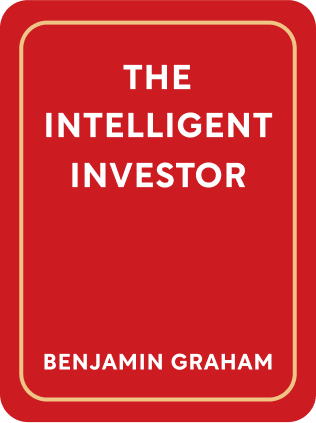

This article is an excerpt from the Shortform book guide to "The Intelligent Investor" by Benjamin Graham. Shortform has the world's best summaries and analyses of books you should be reading.
Like this article? Sign up for a free trial here .
What are the best The Intelligent Investor lessons you can learn from Benjamin Graham’s classic investing book?
These The Intelligent Investor lessons outline Graham’s top principles for investing, as well as his strategies for the different ways you can invest and manage your money. Benjamin Graham promotes level-headedness, careful management, and self-determination.
Read these The Intelligent Investor lessons below.
The Intelligent Investor Lessons
Investing well over the long term does not require incredible intelligence or deep insight. Instead, it requires two things:
- A rational framework for making decisions
- Preventing your emotions, and other people’s emotions, from overriding your framework
With these two elements, and without extensive trading experience, you can do better than more financially-educated people who lack patience, discipline, and emotional control.
Investing successfully in stocks requires keeping a few key principles in mind:
- A stock is not just a mere object you trade. It is a piece of ownership in a business. Therefore, the stock has a fundamental value that is often not the share price. Understand the business, and you understand the fundamental value.
- Pay attention to the price at which you buy stock. The more you pay for a stock, the lower your return will be. Buying stock carelessly, with the expectation that you can buy anytime at any price and still profit, is a mistake. As Graham says, “buy your stocks like you buy your groceries, not like you buy your perfume.”
- The market has constant mood swings. At times, it is over-optimistic, which makes stocks too expensive. At other times, it is pessimistic, which makes stocks cheap. The key is to buy from pessimists and sell to optimists.
- Keep a “margin of safety”—don’t get carried away and overpay for a stock, or a downturn can cause irrevocable losses.
Don’t Believe the Active Trading Hype
You’ve likely seen commercials for stock brokerages that let you trade more conveniently and with lower fees than ever before. Beware: brokerages make money when you trade, and not when you make money. Therefore, brokerages hype up speculation for common investors in their marketing, promising riches at unprecedented speed.
In reality, active trading worsens your performance. A 2000 study by finance professors found that the most active traders (who turned over more than 20% of their holdings each month) underperformed the market by 6.4% per year, while the least active traders (trading less than 0.2% of holdings each month) matched the market. Benjamin Graham’s The Intelligent Investor lessons can help you become a better investor.
Defensive vs. Aggressive Investors
One of the important The Intelligent Investor lessons is about the different types of investors. Having distinguished investors from speculators, Graham defines two different types of intelligent investors: defensive investors and aggressive (or enterprising) investors.
Defensive investors want to avoid spending too much time on investing. They like simplicity and don’t love thinking about investments or money. Their goal is to perform on average, in line with the market, and to avoid serious mistakes.
Aggressive investors are willing to devote serious time and energy to research stocks and select good ones. They enjoy thinking about money and see smart investing as a competitive game they want to win. Their goal is to achieve better returns than the passive investor (Graham says an extra 5% per year, before taxes, is necessary to justify all the effort.)
Both approaches can be intelligent and can perform well. The key is choosing the right type of investment for your temperament and goals, to stick with it over your entire investment timeline, and to keep your emotions well under control.
Market Fluctuations and Mr. Market
Many of The Intelligent Investor lessons are taught through the allegory of Mr. Market. When asked to predict what the market would do, the financier J.P. Morgan said, “it will fluctuate.”
You can be sure that the market will fluctuate. In all likelihood, you will not be able to predict when and how the market fluctuates. You can, however, respond to fluctuations in two critical ways:
- Steel yourself mentally for the fluctuations. Prepare for the idea that your portfolio may decline by 30% from its high point, and don’t tie your emotions to these fluctuations.
- Watch patiently and prepare to spot opportunities when they do appear. When the market sours on a stock, it can be an overreaction and present a bargain buying opportunity.
Margin of Safety
In seeking good investments, Graham always made sure to build in enough margin of safety. In simple terms, the margin of safety is a measure of how much can go wrong before an investment goes bad. If you make investments with a larger margin of safety, you have a greater likelihood of prevailing in the end. This is another one of the major The Intelligent Investor lessons.
Warren Buffett offers an analogy: If you’re designing a bridge that tends to support 10,000 pounds in everyday traffic, you should design it to carry 30,000 pounds.
Many of Graham’s investment criteria we’ve covered have margin of safety built into them:
- Interest coverage ratio: If a company’s earnings covers 5 times its interest expenses, then even if it suffers a sudden 20% drop in earnings, it has more than enough earnings remaining to continue paying interest and thus avoiding defaulting on debt. In contrast, a company that can only cover 1 times its interest expense is in danger of defaulting with just small setbacks to earnings.
- Price to book value: If you buy stock in a company when its market value is two-thirds of book value, the company’s book value can shrink by one-third before your investment becomes negative (relative to book value).
- Asset to liabilities ratio: If a company has assets at multiple times its liabilities, it can lose significant value before its bondholders suffer a loss.
A larger margin of safety prevents you from needing to be clairvoyant or unusually clever. You may not be able to predict market downturns or company setbacks, but with a large margin of safety, that doesn’t matter—your investment can still be successful.

———End of Preview———
Like what you just read? Read the rest of the world's best book summary and analysis of Benjamin Graham's "The Intelligent Investor" at Shortform .
Here's what you'll find in our full The Intelligent Investor summary :
- Key advice from what Warren Buffett considers the "best book about investing"
- The 2 major indicators you should use for evaluating stocks
- How you can use aggressive or defensive investing strategies





